How AI is Changing Fleet Management and Autonomous Delivery Vehicles
Artificial Intelligence (AI) is revolutionizing many industries, and one of the sectors most profoundly impacted is fleet management. As companies look to streamline operations, reduce costs, and improve overall efficiency, AI has emerged as a key player in driving these changes. From boosting operational efficiency to significantly enhancing safety measures, AI is transforming how businesses manage and maintain their fleets on a day-to-day basis.
Moreover, with the rise of autonomous delivery vehicles, powered entirely by AI, we are beginning to see a major shift in the logistics and transportation industries. These innovations are reshaping the way goods and services are delivered, creating faster, more efficient systems that can operate with minimal human intervention. In this blog, we will delve deeper into how AI is fueling these advancements, examining the various ways it is driving smarter fleet management and transforming delivery services into more dynamic, effective systems.
1. Fleet Management
As we move further into the future, AI’s influence on fleet management will only continue to grow. By integrating AI into fleet operations, companies can enjoy significant improvements in multiple areas, from real-time tracking to predictive maintenance and fuel efficiency. Additionally, with the rise of autonomous delivery vehicles, businesses are beginning to realize the full potential of AI in logistics, making the delivery process faster, cheaper, and safer than ever before. So, let’s explore these exciting advancements and understand exactly how AI is shaping the future of fleet management and autonomous delivery systems.
2. Autonomous Delivery Vehicles
Furthermore, as technology continues to evolve, companies are leveraging AI in even more innovative ways. This means not only optimizing fleet performance but also unlocking new levels of precision in decision-making processes. AI enables businesses to respond to real-time challenges with agility and foresight, allowing them to stay ahead of the competition. Let’s now dive deeper into the various applications of AI within fleet management and how it enhances the efficiency of autonomous delivery vehicles, transforming the entire landscape of transportation.
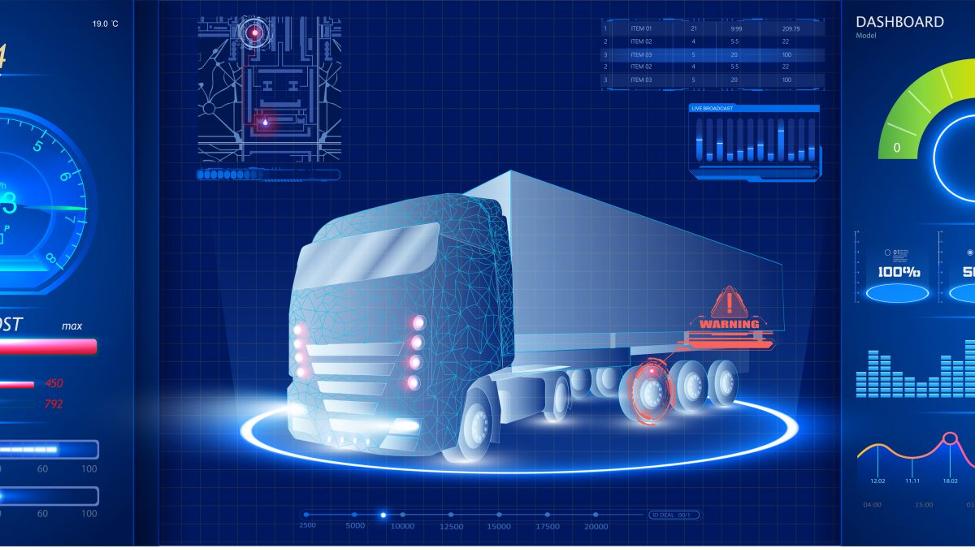
What is AI in Fleet Management?
AI in fleet management refers to the use of intelligent algorithms and machine learning to optimize the operation of a fleet of vehicles. Fleet managers often oversee large numbers of vehicles, which can include trucks, cars, or delivery vans. AI helps these managers track, monitor, and maintain vehicles in a more efficient way.
From route optimization to predictive maintenance, AI allows businesses to save time, cut costs, and reduce risk.
The Role of AI in Fleet Management
AI is reshaping fleet management in several key ways. Below are the primary areas where AI is making a difference:
1. Route Optimization
Traditional methods of planning routes are time-consuming and often inefficient. AI can quickly calculate the best routes for a fleet, considering traffic conditions, fuel consumption, and delivery schedules. Using real-time data, AI systems provide dynamic route adjustments to ensure that deliveries are made as quickly and cost-effectively as possible.
By constantly learning from previous routes, AI systems can improve over time. This leads to smarter route planning and a reduction in delays.
2. Predictive Maintenance
One of the biggest challenges in fleet management is maintaining vehicles and preventing unexpected breakdowns. AI can help by predicting when maintenance is needed. Using data collected from sensors on the vehicles, AI systems can detect patterns that signal mechanical issues before they occur.
This helps fleet managers schedule maintenance in advance, reducing the likelihood of breakdowns and ensuring the fleet remains operational. Predictive maintenance also extends the lifespan of vehicles and lowers repair costs by catching issues early.
3. Fuel Efficiency
Fuel is one of the biggest expenses for fleet managers. AI can analyze driving patterns, vehicle loads, and routes to help reduce fuel consumption. AI systems can also provide recommendations for more fuel-efficient driving behaviors, such as reducing speed or avoiding heavy traffic.
By improving fuel efficiency, AI helps businesses reduce their carbon footprint and cut operational costs.
4. Driver Monitoring and Safety
Safety is a top priority in fleet management. AI systems can monitor driver behavior and provide insights into unsafe driving habits. This can include speeding, harsh braking, and distractions. By analyzing this data, fleet managers can offer targeted training to improve driver safety.
AI can also help detect signs of driver fatigue, alerting the driver or fleet manager before an accident occurs. This real-time monitoring can greatly reduce the risk of accidents, protecting both drivers and vehicles.
5. Fleet Tracking and Telematics
With AI-powered telematics, fleet managers can track their vehicles in real-time. This provides valuable insights into vehicle location, performance, and condition. AI systems can analyze this data to give fleet managers a clear view of their operations. They can then make informed decisions on vehicle allocation, maintenance, and route adjustments.
This real-time visibility not only improves operational efficiency but also helps reduce theft and misuse of fleet vehicles.
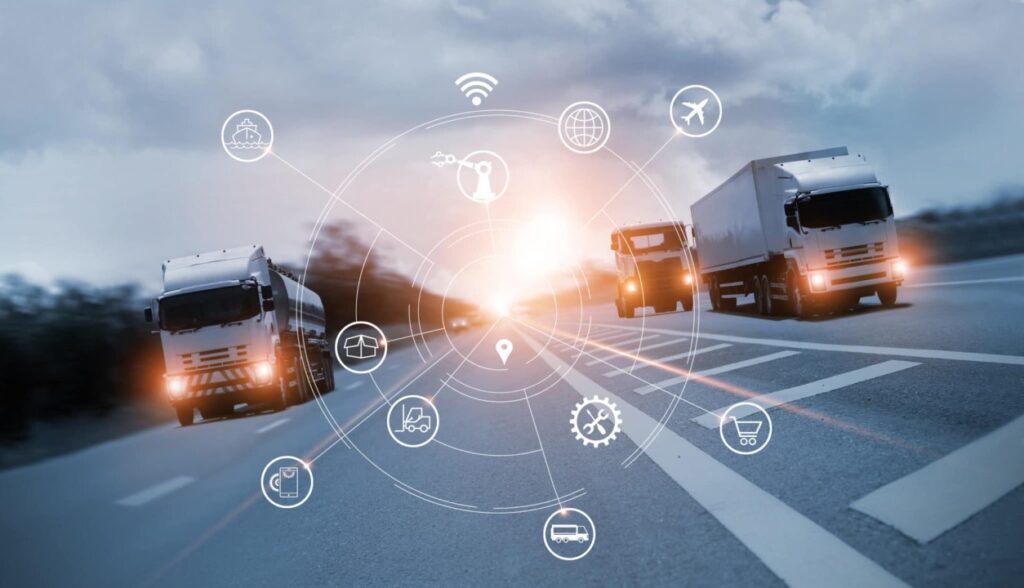
Autonomous Delivery Vehicles: The Future of Logistics
Autonomous delivery vehicles represent the next frontier in logistics. These vehicles, powered by AI, can navigate roads, avoid obstacles, and deliver goods without human intervention. This technology has the potential to revolutionize the delivery process, making it faster, safer, and more cost-effective.
1. The Rise of Autonomous Delivery Vehicles
The rise of e-commerce has increased the demand for efficient delivery services. Consumers now expect faster delivery times, putting pressure on logistics companies to keep up. Autonomous delivery vehicles can help meet this demand by operating 24/7, reducing delivery times, and minimizing human error.
Several companies are already developing autonomous delivery vehicles, including Amazon, Uber, and Tesla. These vehicles range from small robots designed for short-range deliveries to fully autonomous trucks for long-distance shipping.
2. How Autonomous Delivery Vehicles Work
Autonomous delivery vehicles rely on a combination of AI technologies to navigate and make decisions. These include:
- Computer Vision: Cameras and sensors help the vehicle “see” its surroundings, detecting obstacles and other vehicles.
- Machine Learning: AI systems analyze data from past trips to learn patterns and improve future deliveries.
- Lidar and Radar: These technologies help the vehicle understand its environment, identifying nearby objects and their distance.
- GPS Navigation: AI uses GPS data to determine the most efficient route and adjust in real-time if there are traffic issues or roadblocks.
With these technologies working together, autonomous vehicles can make safe, efficient deliveries without the need for a human driver.
3. Benefits of Autonomous Delivery Vehicles
There are several benefits to using autonomous delivery vehicles, including:
- Reduced Labor Costs: With no need for drivers, businesses can save on labor costs.
- Increased Efficiency: Autonomous vehicles can operate around the clock, leading to faster deliveries.
- Fewer Accidents: AI systems can react faster than human drivers, reducing the risk of accidents.
- Lower Fuel Consumption: AI can optimize driving patterns to reduce fuel consumption, leading to lower operational costs.
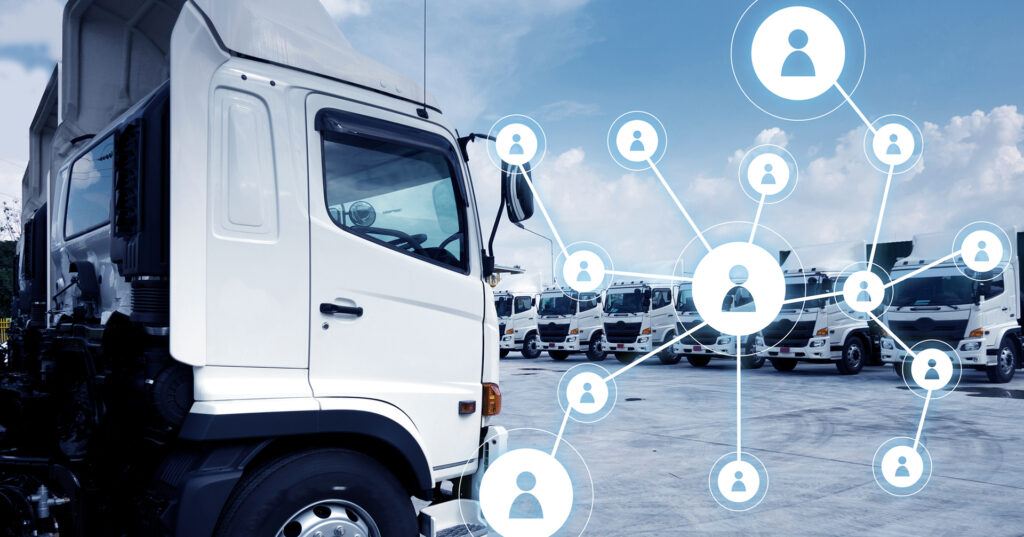
Challenges and Ethical Concerns
While AI and autonomous delivery vehicles offer many benefits, they also come with challenges and ethical concerns.
1. Job Displacement
As AI and autonomous vehicles become more common, there is concern that they could displace jobs in the transportation and logistics industries. While these technologies create new roles, such as AI maintenance and fleet management, they may reduce the demand for drivers. Businesses must find a balance between embracing AI and protecting workers’ livelihoods.
2. Safety and Liability
Autonomous vehicles must navigate complex road conditions and avoid accidents. While AI systems have advanced significantly, they are not yet foolproof. Questions about liability also arise—who is responsible in the event of an accident involving an autonomous vehicle? These issues will need to be addressed as the technology continues to develop.
3. Regulatory Challenges
Governments and regulatory bodies are still working to create policies around the use of AI in fleet management and autonomous vehicles. Regulations must ensure that these technologies are safe while fostering innovation. It’s a delicate balance, and ongoing discussions will shape how these technologies are deployed.
The Future of AI in Fleet Management and Autonomous Delivery Vehicles
The future of AI in fleet management and autonomous delivery vehicles looks promising. We can expect continued innovation and widespread adoption in the coming years.
1. AI-Powered Logistics Networks
In the future, we may see entire logistics networks powered by AI. This would include not just autonomous vehicles but also AI-driven warehouses, inventory management, and customer service. These systems would work together to create a seamless, fully automated supply chain, dramatically increasing efficiency.
2. Vehicle-to-Everything (V2X) Communication
As AI and autonomous vehicles evolve, Vehicle-to-Everything (V2X) communication will become increasingly important. V2X technology allows vehicles to communicate with each other, as well as with road infrastructure and traffic systems. This will enable more efficient traffic management, reduce congestion, and improve safety.
3. Sustainability
AI can help create more environmentally friendly fleet operations. By optimizing routes and reducing fuel consumption, AI can reduce the carbon footprint of logistics companies. Additionally, as electric autonomous vehicles become more common, we can expect a shift towards greener, more sustainable logistics networks.
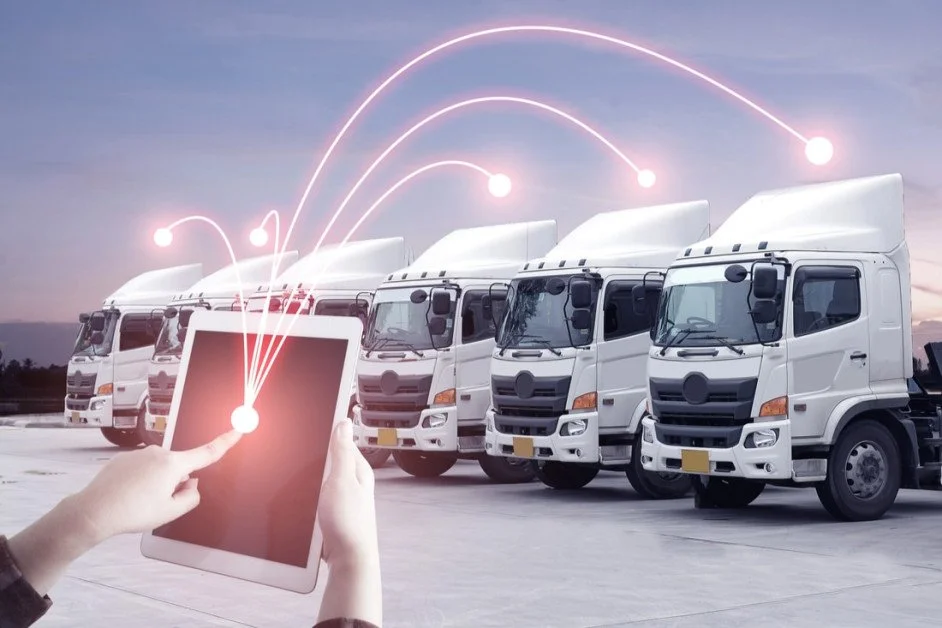
Conclusion: AI is Driving the Future of Fleet Management and Delivery
It is evident that AI is driving the future of fleet management and delivery, and its transformative impact is only expected to grow in the coming years. By optimizing routes, enhancing safety measures, and significantly reducing operational costs, AI is revolutionizing how businesses manage their fleets. Autonomous delivery vehicles, which once seemed like a futuristic concept, are now quickly becoming a reality. This promises to completely reshape the logistics and transportation industries, providing faster and more reliable delivery systems. Moreover, as the technology continues to mature, the efficiency of fleet operations will only improve, creating a seamless and highly productive flow of goods.
1. AI is Driving the Future
Nevertheless, while AI presents numerous advantages, there are still challenges that must be addressed. Issues such as job displacement and the need for regulatory frameworks to manage AI systems in fleet management remain important concerns. However, with the immense potential that AI offers, these hurdles are not insurmountable. As we continue to see AI systems become smarter, more efficient, and more adaptable, businesses can leverage this technology to create smarter, safer, and more efficient fleet management solutions. The potential for AI to streamline operations, reduce accidents, and lower costs is substantial, making it an indispensable tool for companies looking to stay ahead of the curve.
2. Fleet Management and Delivery
As AI technology evolves even further, it is crucial that businesses remain adaptable and open to integrating new advancements into their operations. Embracing AI-powered systems, such as autonomous vehicles and AI-driven fleet management tools, is not just a matter of convenience—it’s becoming a competitive necessity in an increasingly digital world. The companies that adopt these technologies early on will undoubtedly gain a competitive edge, enabling them to operate more efficiently, reduce costs, and provide better services to their customers.
3. In conclusion :
the future of fleet management and delivery is inextricably linked with AI advancements. Companies that embrace AI and its wide array of capabilities will be well-positioned to lead in the next generation of logistics and transportation. The road ahead is promising, and as AI continues to unlock new possibilities, the future of fleet management and delivery services will be marked by even greater innovation, reliability, and success. By harnessing the full power of AI, businesses can ensure they remain not only relevant but also highly competitive in this rapidly evolving landscape.
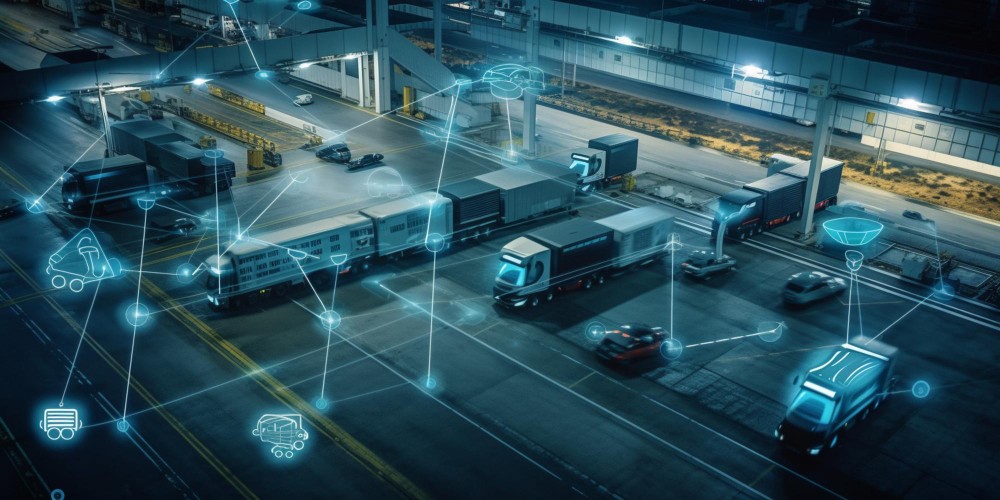

Pingback: Future Innovations in Sustainable Energy: What’s Next